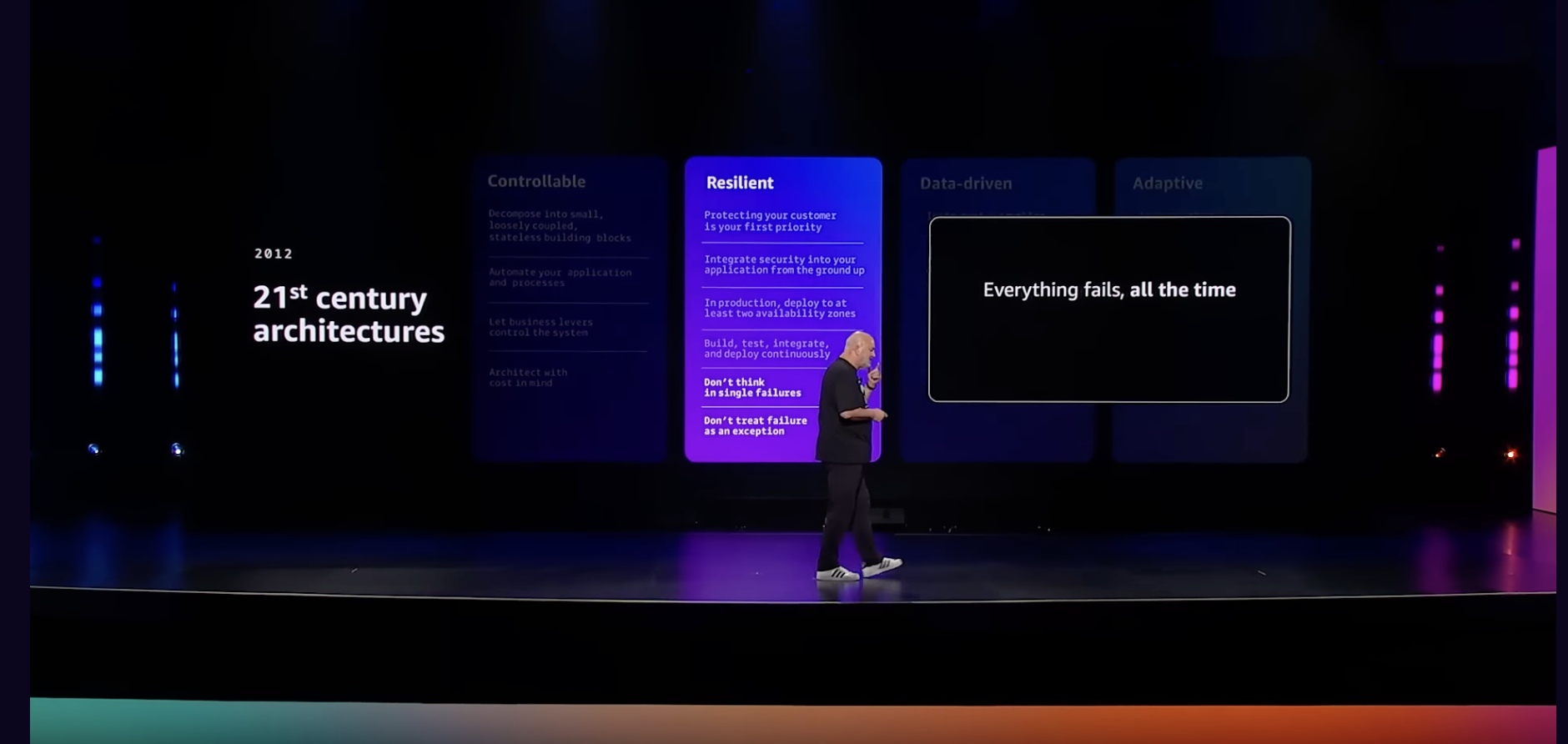It’s a quiet evening in a bustling pizza shop. A delivery driver rushes in with a towering stack of pizza boxes teetering precariously. The inevitable happens—a few boxes slip, scattering slices everywhere. Amid the chaos, one observer quips, “Two pizzas per team!” The room erupts in laughter. Little did anyone know, this offhand comment would become the foundation of a revolutionary organizational principle at Amazon: the Two Pizza Team.
This seemingly trivial anecdote captures a profound truth: simplicity is not the absence of complexity but its strategic management. In his 2024 AWS re:Invent keynote, Dr. Werner Vogels, Amazon’s CTO, masterfully unpacks this idea, sharing how Amazon has scaled its systems—and its teams—to tackle some of the most complex challenges in technology, all while keeping simplicity at the core. Here’s what we can learn.
Lesson 1: Complexity Is Inevitable—But Manageable
Imagine building a bicycle. A unicycle has fewer parts, but it’s tricky to ride. A tricycle is stable but cumbersome. A bicycle strikes the perfect balance: more components than a unicycle, but with agility and control. This is how Amazon designs systems like S3, the “Simple Storage Service.” While the name suggests ease, the reality is an intricate web of over 300 microservices working together seamlessly.
Key Insight: Complexity is like energy—it can’t be destroyed, only transferred. The trick is to move complexity to where it’s best managed. Amazon hides complexity beneath the surface, ensuring customers experience simplicity, not chaos.
Lesson 2: Make Evolvability a Core Requirement
In software, as in life, change is constant. Systems must evolve to survive. Vogels emphasizes that evolvability—the ability to adapt and scale—is more than a nice-to-have; it’s a necessity.
A Real-World Example: S3’s Evolution
When Amazon S3 launched in 2006, it started with just six microservices. Today, it operates with over 300 microservices while delivering a deceptively simple experience. Every step of its evolution—adding strong consistency, optimizing for new use cases—required rewriting foundational components. The goal? Adapt without disrupting customers.
Takeaway: Think of your system as a Lego set. Start small, but ensure each block is designed to fit into something bigger. As your needs grow, you’ll add pieces without tearing the structure apart.
Lesson 3: Break Complexity into Bite-Sized Pieces
When a system grows unwieldy, it risks collapsing under its own weight. Amazon solves this by breaking systems into modular, manageable components.
The Power of Cell-Based Architectures
Picture a massive skyscraper with independent elevators for every few floors. If one elevator breaks, the rest still function. Amazon uses cell-based architectures, isolating systems into “cells” that operate independently. Whether it’s CloudWatch or Route 53, this design ensures reliability and limits failures.
Key Benefit: By compartmentalizing systems, you reduce risk, improve manageability, and keep scaling simple.
Lesson 4: Predictability Beats Cleverness
Sometimes the simplest solutions are the smartest. Amazon’s load balancers, for instance, don’t rely on unpredictable, event-driven updates. Instead, they fetch configurations from S3 at fixed intervals, ensuring stability and reducing potential failures.
Metaphor: A Clock vs. a Stopwatch
Event-driven systems are like stopwatches, starting and stopping in unpredictable ways. Predictable systems are like clocks—steady, reliable, and easy to manage. Amazon’s approach transforms unpredictability into constant, manageable workloads.
Lesson 5: Automate Everything (Except Judgment)
When you’re operating at Amazon’s scale, manual processes are a bottleneck. That’s why automation is a cornerstone of their strategy, from deploying new regions to processing trillions of DNS requests daily.
Example: S3’s Durability Threat Model
Amazon employs automated threat models for S3, ensuring durability even as the system evolves. Instead of relying solely on humans, automation handles repetitive tasks while engineers focus on strategy.
Pro Tip: Automate anything that doesn’t require human judgment. Save people for high-stakes decisions where creativity and critical thinking matter most.
The Hidden Hero: Time as a Building Block
Perhaps the most fascinating innovation revealed in Vogels’ keynote is Amazon’s use of synchronized clocks. Time—often unreliable in distributed systems—has been transformed into a powerful tool for simplifying complex algorithms.
Why It Matters
With Amazon’s Time Sync Service, tasks like distributed transactions and global consistency become dramatically simpler. This innovation removes reliance on outdated methods like two-phase commits, making systems faster and more reliable.
Analogy: Time in distributed systems is like GPS for drivers. Without it, navigating becomes guesswork. With precise, synchronized clocks, everything runs smoother and faster.
Why This Matters Beyond Tech
Amazon’s approach isn’t just about scaling technology—it’s about solving universal challenges:
• For startups: Start small but think big. Use modular designs to future-proof your systems.
• For enterprises: Automate complexity to free up resources for innovation.
• For society: Apply these principles to tackle global challenges, from healthcare to sustainability.
The Call to Action: Be a Complexity Sculptor
As Dr. Vogels emphasizes, simplicity isn’t accidental—it requires discipline. Whether you’re building software, managing teams, or solving global problems, the lesson is clear: break complexity into manageable pieces, automate wisely, and always design for evolution.
A Challenge for You
How can you apply these principles to your work? Are there areas where complexity is holding you back? Start by asking:
1. What parts of my system (or organization) can I break into smaller, independent pieces?
2. Where can I move complexity to improve simplicity for users?
3. What processes can I automate to focus on high-value tasks?
Closing Thought: Technology doesn’t just shape systems—it shapes the world. By embracing simplicity as a strategy, you can build systems—and solutions—that are not just efficient but transformative.

Leave a Reply